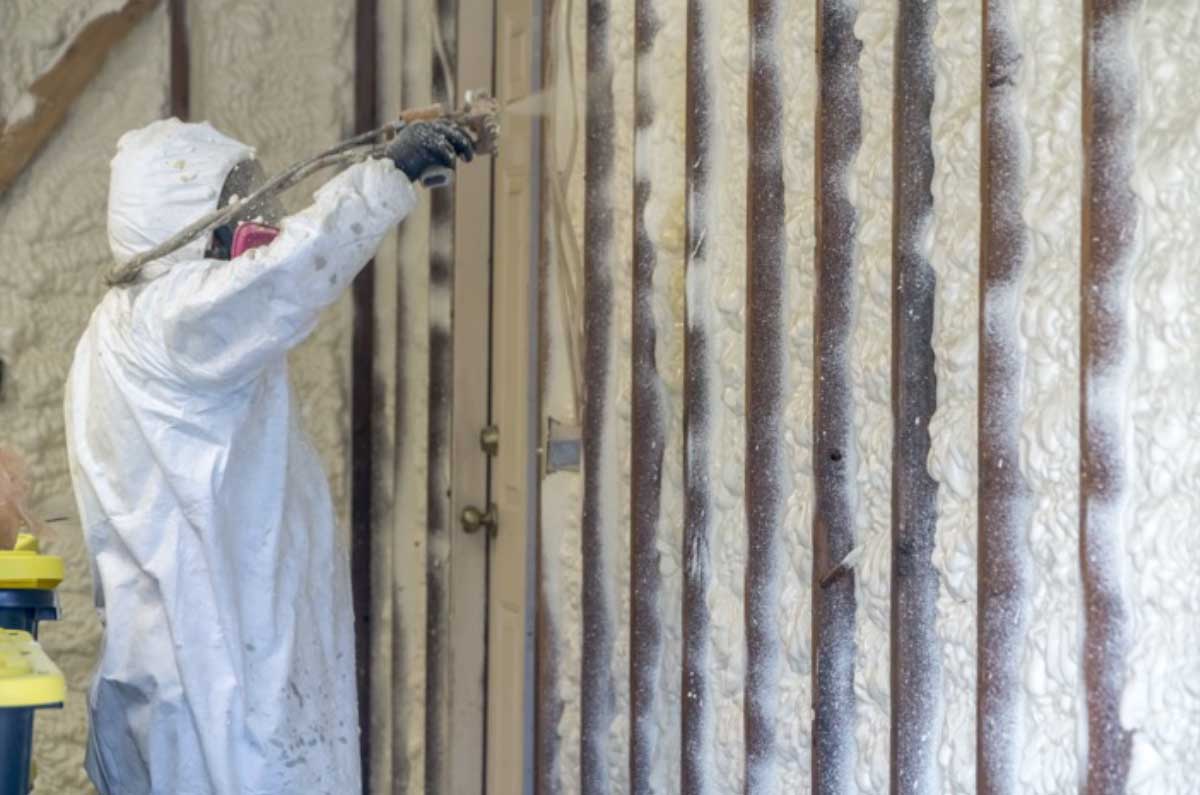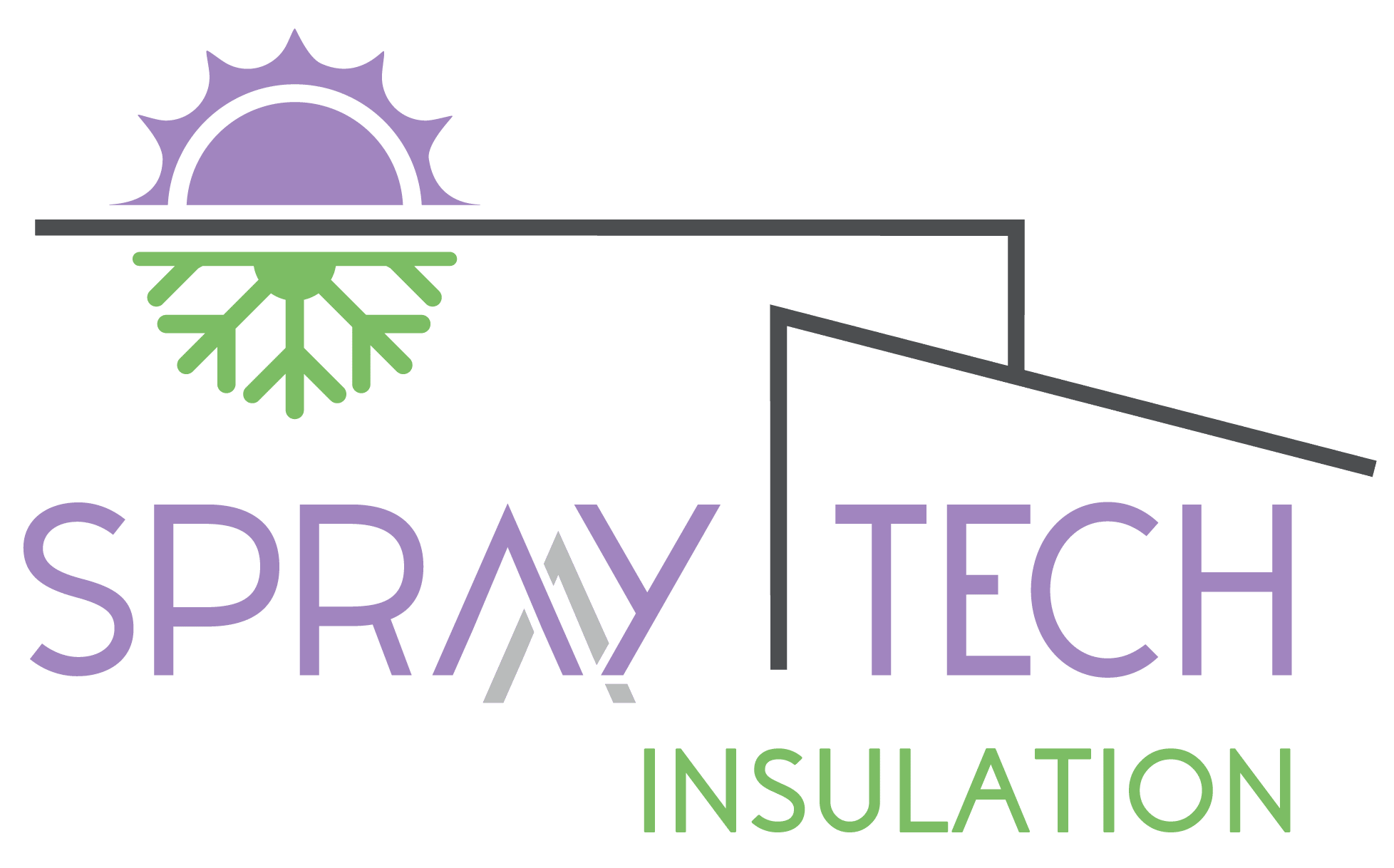
While spray foam insulation offers unparalleled energy efficiency and thermal comfort, its distinct colour can be a visual deterrent for some homeowners. Exposed foam in basements, crawl spaces, garages, or even exterior applications like shipping containers or roofs may prompt the question – “Should I paint my spray foam insulation?”
Understanding Spray Foam Insulation: A Versatile Solution
Spray foam insulation, available in both open-cell and closed-cell varieties, has gained immense popularity due to its exceptional insulating properties, air-sealing capabilities, and moisture resistance. Its unique formulation expands and hardens, creating a continuous barrier that minimizes air leakage and thermal bridging, ultimately enhancing energy efficiency and reducing utility costs.
- Open-cell spray foam insulation is characterized by its soft, spongy texture and superior sound-dampening abilities, making it an ideal choice for interior applications.
- Closed-cell spray foam insulation, on the other hand, boasts a denser, rigid structure, offering superior resistance to moisture and vapor intrusion, making it suitable for both interior and exterior applications.
Aesthetic Considerations while Painting Spray Foam Insulation
While the functional benefits of spray foam insulation are undeniable, its appearance can be a concern for some homeowners, particularly when the insulation is exposed in living spaces or exterior areas. Painting the foam can seem like an attractive solution to enhance its visual appeal and seamlessly integrate it with the surrounding decor or architectural elements.
- Exposed spray foam insulation in attics, crawl spaces, or unfinished basements can appear unsightly and detract from the overall aesthetic appeal of the space.
- In exterior applications, such as insulating shipping containers, workshops, or metal structures, the distinct color of the foam may clash with the desired aesthetic or fail to provide adequate UV protection.
Painting Spray Foam Insulation May Compromise Insulation Performance
While the prospect of painting spray foam insulation may seem tempting, it is crucial to understand the potential risks and drawbacks associated with this practice. Experts and manufacturers generally advise against painting spray foam insulation, as it can compromise the insulation’s performance and longevity.
Moisture and Air Infiltration Concerns
One of the primary functions of spray foam insulation is to act as an effective vapor barrier and air sealant, preventing moisture and air infiltration. Painting the foam can disrupt this crucial barrier, leading to the following issues:
- Reduced insulating effectiveness due to moisture and air penetration, resulting in potential energy loss and higher utility bills.
- Increased risk of condensation and mold growth within the insulation or surrounding areas, posing potential health hazards and structural damage.
Chemical Compatibility and Adhesion Issues
The chemical composition of many paints can react adversely with the spray foam insulation, leading to potential deterioration or loss of adhesion over time. This can manifest in the following ways:
- Peeling, cracking, or bubbling of the paint, compromising the intended aesthetic appeal and exposing the underlying insulation.
- Degradation of the foam’s structural integrity, reducing its insulating and air-sealing capabilities.
Outgassing and Odor Concerns
During the curing process, spray foam insulation releases volatile organic compounds (VOCs) through a process known as outgassing. Painting the foam can trap these gases, leading to persistent odor issues within the living spaces or enclosed areas.
- Trapped VOCs can contribute to poor indoor air quality and potential health concerns for occupants.
- Odors may persist for an extended period, causing discomfort and necessitating costly remediation measures.
Warranty Implications
Most reputable spray foam insulation manufacturers explicitly state that painting their products voids the warranty. By painting the insulation, homeowners risk losing the protection and coverage offered by the manufacturer’s warranty, leaving them vulnerable to potential issues and repair costs.
Alternative Solutions: Preserving Insulation Integrity
Given the potential risks and drawbacks associated with painting spray foam insulation, it is advisable to explore alternative solutions that maintain the insulation’s integrity while addressing aesthetic concerns.
Covering with Approved Thermal Barriers
A building code compliant approach is to cover the exposed spray foam insulation with an approved thermal barrier, such as drywall or other building materials. This approach not only enhances the visual appeal but also provides additional fire resistance and maintains the insulation’s performance.
- Drywall or other approved barriers can be painted or finished to match the desired aesthetic, while still allowing the insulation to function as intended.
- Consult with professionals or refer to local building codes to ensure compliance with fire safety regulations and proper installation techniques.
Strategic Concealment and Design Integration
In some cases, strategic concealment or design integration can be an effective solution for exposed spray foam insulation. This approach involves incorporating the insulation into the overall design aesthetic or concealing it with architectural elements.
- Strategically placed framing, trim, or decorative elements can effectively conceal exposed insulation while maintaining its functionality; only if it’s covered with thermal barrier paint.
- Incorporating the insulation’s texture or color into the overall design scheme can create a unique and visually appealing aesthetic.
Consulting Professionals and Manufacturers
When considering any modifications or treatments to spray foam insulation, it is crucial to consult with professionals and manufacturers. Their expertise and guidance can help ensure that the insulation’s performance is not compromised and that any proposed solutions align with best practices and warranty requirements.
- Seek advice from experienced insulation contractors or building professionals who specialize in spray foam insulation applications.
- Consult with the manufacturer’s technical support team to understand their recommendations and potential warranty implications.
Embracing the Unique Aesthetic: A Sustainable Choice
While the desire to enhance the visual appeal of exposed spray foam insulation is understandable, it is essential to weigh the potential risks against the aesthetic benefits. Embracing the unique texture and appearance of the insulation can be a sustainable and responsible choice, allowing homeowners to enjoy the exceptional energy efficiency and comfort it provides without compromising its performance.
- Consider the exposed insulation as a testament to your commitment to energy conservation and sustainable living.
- Educate visitors and guests about the benefits of spray foam insulation, fostering awareness and appreciation for its functionality.
Conclusion: A Balanced Approach for Optimal Results
The decision to paint spray foam insulation should be approached with caution and careful consideration. While the aesthetic appeal may be tempting, the potential risks to the insulation’s performance and longevity cannot be overlooked. By exploring alternative solutions, consulting professionals, and embracing the unique qualities of spray foam insulation, homeowners can strike a balance between visual appeal and functional integrity.
Remember, the primary purpose of insulation is to enhance energy efficiency, comfort, and sustainability. Prioritizing these aspects while finding creative ways to integrate the insulation into the overall design aesthetic can lead to a harmonious and responsible solution.
If you’re considering spray foam insulation for your home or commercial space, don’t hesitate to reach out to the experts at Spray Tech Insulation. Our team of knowledgeable professionals can guide you through the process, address any concerns, and provide tailored solutions to meet your specific needs.
Frequently Asked Questions
- Can I paint over spray foam insulation?
While it is technically possible to paint over spray foam insulation, it is generally not recommended by experts and manufacturers. Painting can compromise the insulation’s performance, lead to moisture and air infiltration, and potentially void the manufacturer’s warranty. - What are the risks of painting spray foam insulation?
Painting spray foam insulation can disrupt its vapor barrier and air-sealing capabilities, leading to reduced insulating effectiveness, condensation, and mold growth. Additionally, chemical incompatibilities, adhesion issues, and trapped outgassing can further degrade the insulation’s integrity and indoor air quality. - Are there any exceptions where painting spray foam insulation is acceptable?
In some exterior applications, such as insulating shipping containers or metal structures, painting the exposed spray foam insulation may be necessary for UV protection and aesthetic purposes. However, it is crucial to consult with professionals and use specialized paints designed for compatibility with spray foam insulation. - What are the alternative solutions to painting spray foam insulation?
Covering the exposed insulation with approved thermal barriers like drywall, strategically concealing it with architectural elements, or embracing its unique aesthetic are recommended alternatives that maintain the insulation’s performance and integrity. - Can I consult with professionals or manufacturers before painting spray foam insulation?
Absolutely! Consulting with experienced insulation contractors, building professionals, or the manufacturer’s technical support team is highly recommended. They can provide valuable guidance, assess potential risks, and ensure compliance with best practices and warranty requirements.
By prioritizing the functional integrity of your spray foam insulation and exploring creative solutions that harmonize with your aesthetic preferences, you can enjoy the benefits of exceptional energy efficiency, comfort, and sustainability while maintaining a visually appealing living or working environment.
continue reading

